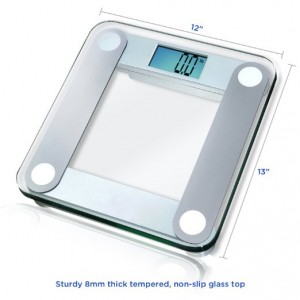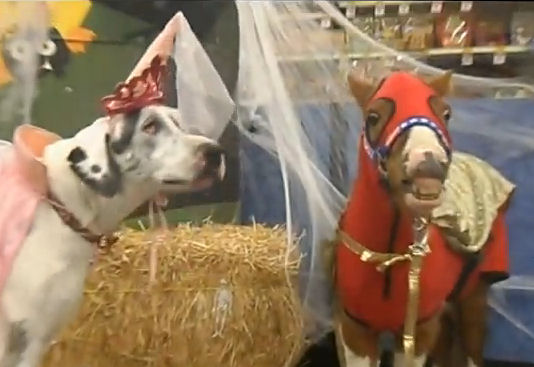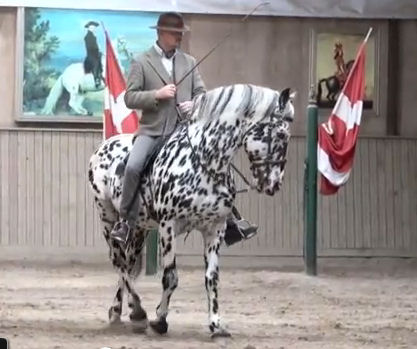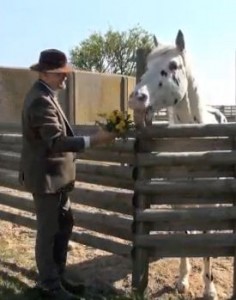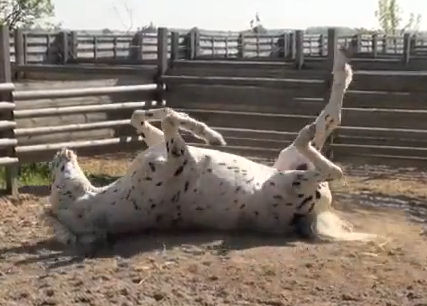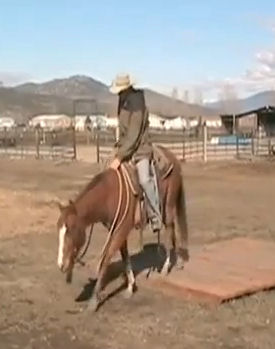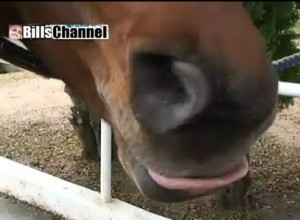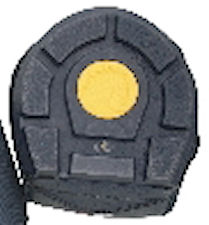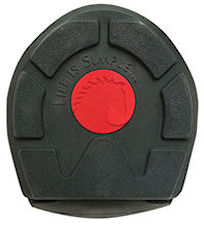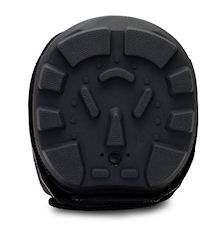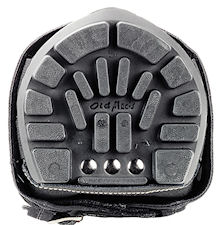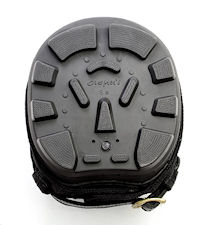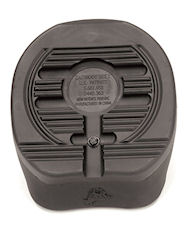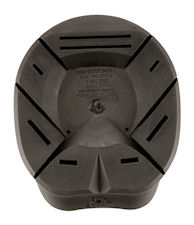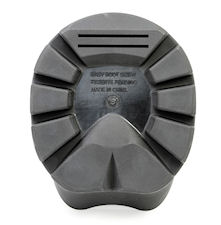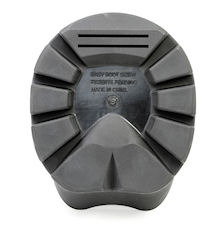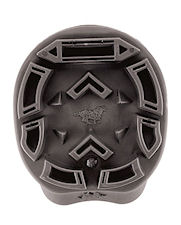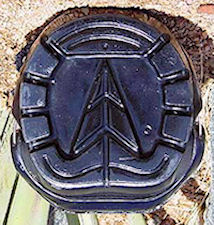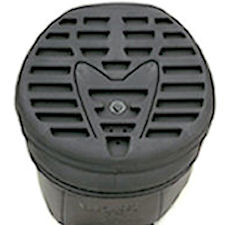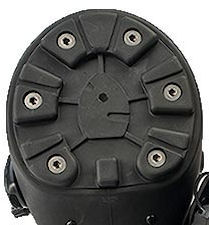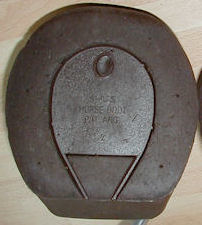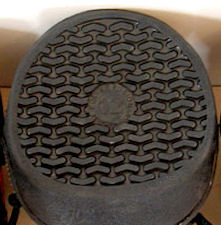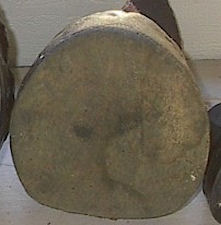Icelandics in Texas ==> Clipping Icelandic horses
My Icelandic horses in early March started shedding their long winter coats amidst the singing birds and blooming flowers heralding the coming of Spring in north Texas. Icelandic horses winter coats were not intended for our mild winters. Their winter coat was between 2 – 4 inches long. Slow natural shedding could take over a month. Using shedding tools speeds up the process, but clipping is the fastest way to remove the excess hair.
Every horse clipping explanation that I have read says to use a #10 blade for a body clip. This cuts the hair at 1/16 inch or 1.6 mm. The face, ears, and legs may be clipped even shorter. Dogs, on the other hand, are clipped at varying lengths depending on breed and fashion. There are many blade lengths available for clippers. The #T84 blade (3/32 inch, 2.4 mm) is an extra wide blade commonly used to clip horses.

Spring rains and warmer temperatures bring out the mosquitoes. A female mosquito bites through the skin using a special straw-like proboscis to get blood. They need the blood to be able to make their mosquito eggs. The bite is nearly undetectable, but the after effects can cause an immune response raising welts with itching. Bangsi is particularly sensitive to insect bites.
Besides the irritation that can cause severe scratching, mosquitoes are vectors for several illnesses. Texas horses can be vaccinated against Eastern, Western, and Venezuelan Equine Encephalomyelitis, plus the West Nile virus that also affects humans.
Asian Tiger Mosquitoes are common in north Texas.

Asian Tiger Mosquito by Sean McCann on Flickr (Creative Commons)
The horses longer winter hair was a definite help in avoiding mosquito bites on their body and even their lower legs. The mosquitoes could not easily penetrate and bite past the long hair. They would land and crawl around looking for a place to bite, but unable to find a spot. The only places the mosquitoes seemed to be able to bite were the face and sheath. The mosquitoes would line up around the eyes and along the cheek bones at dusk and dawn. I smeared those areas with SWAT repellant ointment. Letting horses have a place to stay inside at dusk and dawn, plus a fan to blow on them, can also help lower the bites.
How long is a mosquito proboscis?
Mosquitoes are slender and relatively small insects, usually measuring about 3–6 mm in length. Some species, however, can be as small as 2 mm while others may be as long as 19 mm. (1)
“most of the commonest mosquitoes have the proboscis 0.1 – 0.14 inches (2.5-3.5 mm) long and half or even 2/3 of it is usually inserted in victim’s body” (2)
Small mosquitoes have a proboscis up to 2 millimeters long; in medium-sized mosquitoes the proboscis is 2-3 mm; in large mosquitoes it is greater than 3 mm. (3)
Clipping with a #10 blade (1/16 inch) could leave them more vulnerable to mosquito bites. The difference in hair length to be slightly cooler wouldn’t be enough benefit, particularly so early in the Spring. The #10 blade length is shorter than their natural summer coat.
The ideal clip length would balance cutting their hair shorter to help them be cooler while leaving their hair long enough to lessen mosquitos bites. Last year I experimented using snap-on combs over #10 blade for different lengths of cut, but the combs left more streaks in their coat. A blade cuts more smoothly and evenly with less effort, but does require purchase of extra blades.
I clipped their coats at 1/4 inch (6.3 mm) using a #5FC blade. The #5FC is an even clip while the #5 blade has a skip tooth cutting edge.



The 1/4 inch clip length would be longer than a mosquito proboscis, which would lessen the likelihood of a Texas mosquito penetrating through their hair to their skin. The extra hair length would also provide them a bit more protection in case of an unusual cold snap or cold wet rain while still helping make them more comfortable and cooler in the warming weather. The longer length would make a blanket unnecessary in our Texas climate for our Icelandic horses, even with a Spring cold snap. I only clipped above the knee leaving their longer hair on the cannon bones to shed out naturally for extended mosquito protection.
Bangsi needed no further clipping later in the Spring to finish shedding his coat. I clipped Twistur again in late March using the #5 blade for most of his body, but used a #10 on his neck, chest, and around his head. He really enjoyed having the hair trimmed off shorter on his head and under his mane. Twistur’s coat re-grows and is a different thickness and texture than Bangsi’s. This maybe a symptom of some insulin resistance.
Next year I may clip them heading into winter to more closely mimic the coat length of a typical Texas Quarter horse in our area. Their 4 inch hair is too long for our winters, though I do love their fuzzy unique look.
| A-5 Clipper Blade |
Inch |
Millimeter |
| #40 |
1/100 |
0.25 |
| #50 |
1/125 |
0.2 |
| #30 |
1/5 |
0.5 |
| #15 |
3/64 |
1.2 |
| #10 |
1/16 |
1.5 |
| #9 |
5/64 |
2.0 |
| Blocking blade |
5/64 |
2.0 |
| T84 |
3/32 |
2.4 |
| #8.5 |
7/64 |
2.8 |
| #7 |
1/8 |
3.2 |
| T24 |
|
4.0 |
| #6 |
3/16 |
4.8 |
| #5 |
1/4 |
6.3 |
| #4 |
3/8 |
9.5 |
| #3 |
1/2 |
13.0 |
References:
– 1 inch = 25 mm
– “A Field Guide to Common Texas Insects” – Mosquito: Agrilife Extension: Entymology, Texas A&M System
– Centers for Disease Control (CDC), Division of Vector Borne Disease, West Nile Virus
– “Mosquitoes and the Diseases They Transmit“, Texas Cooperative Extension, Texas A&M University System
(1) “Introduction to mosquitoes (Culicidae)” by Cambridge University Press 052154775X – Medical Entomology for Students, Third Edition – Mike W. Service (Excerpt)
(2) Mosquito bite questions
(3) “The Determination of Mosquito Females by Microscopic Preparations of the Head” in “Mosquito Systematics” VOL. 6(4) 1974 by A. V. Gutsevich, Zoological Institute, Leningrad
